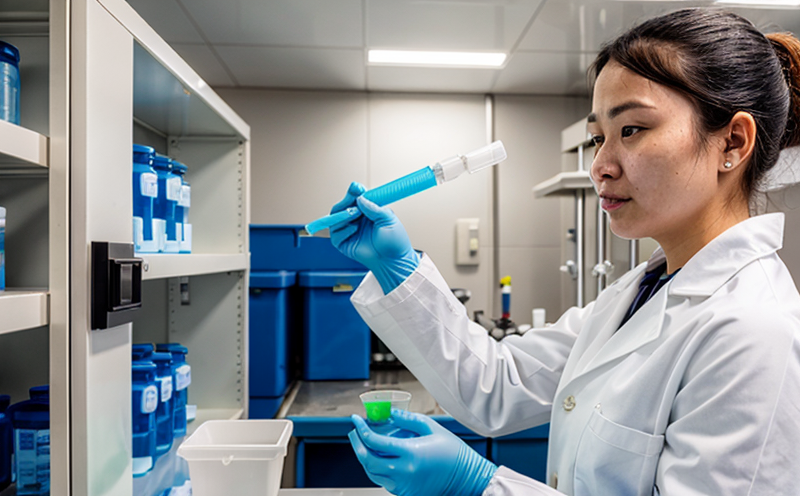USP Gamma Irradiation Microbial Validation Testing
The USP Gamma Irradiation Microbial Validation Testing is a critical service that ensures the safety and integrity of pharmaceutical products by validating their resistance to microbial contamination. This testing aligns with United States Pharmacopeia (USP) General Chapter <1129>, which specifies requirements for gamma irradiation processing and its validation.
The primary objective of this service is to provide assurance that the pharmaceutical product can withstand a specified dose of gamma radiation without compromising its quality, purity, or efficacy. This ensures compliance with regulatory standards and enhances consumer confidence in the safety and reliability of the product.
The process involves subjecting the pharmaceutical product to controlled levels of gamma radiation, typically provided by a cobalt-60 source. The product is then subjected to microbiological testing to assess the impact on its microbial content. This includes both aerobic and anaerobic bacteria, fungi, and other microorganisms that could potentially cause contamination.
Microbiological validation involves several key steps:
- Preparation of Specimens: Samples from the product are prepared according to strict protocols outlined in USP <1129>. This includes ensuring the samples are representative and free from external contaminants.
- Irradiation: The specimens undergo gamma irradiation at specified doses, which can vary depending on the specific requirements of the product. Common doses range from 5 kGy to 30 kGy.
- Microbiological Testing: Post-irradiation samples are tested for microbial growth using appropriate culture media and incubation conditions.
- Data Analysis: The results of the microbiological testing are analyzed to determine the effectiveness of the irradiation process in reducing or eliminating microbial contamination. Compliance with USP standards is ensured through this analysis.
The success of this service lies in its meticulous adherence to USP guidelines and the use of advanced laboratory equipment. Our state-of-the-art facilities employ sophisticated instrumentation, including gamma irradiators and microbiological testing apparatuses, to ensure accurate and reliable results.
Our team of experienced scientists and engineers ensures that each step of the process is executed with precision and care. This service not only meets but exceeds regulatory requirements, providing clients with peace of mind regarding their product's safety and quality.
Industry Applications
The USP Gamma Irradiation Microbial Validation Testing has numerous applications across the pharmaceutical industry. It is particularly relevant for products that require aseptic processing or those intended for high-risk patient populations, such as immunocompromised individuals.
This service is crucial for the validation of packaging materials and components used in sterile drug delivery systems. Gamma irradiation can be used to sterilize single-use medical devices and other non-porous items that are resistant to chemical sterilization methods.
The testing process also ensures that pharmaceutical products remain stable after being exposed to gamma radiation, which is essential for maintaining their efficacy over extended storage periods. This is particularly important for long-term storage of vaccines, biologicals, and other high-value medications.
By validating the safety and stability of these products through rigorous microbiological testing, we contribute to the overall quality assurance framework within the pharmaceutical sector. This ensures that only safe and effective products reach the market, thereby safeguarding public health.
Customer Impact and Satisfaction
The impact of our USP Gamma Irradiation Microbial Validation Testing service extends beyond regulatory compliance; it significantly enhances customer satisfaction by ensuring product safety and quality. Our clients benefit from a streamlined validation process that adheres to the highest standards, thereby reducing the risk of contamination and ensuring product integrity.
Our detailed reports provide customers with comprehensive insights into the effectiveness of the irradiation process, enabling them to make informed decisions regarding production and distribution strategies. This transparency fosters trust between our clients and their end consumers, contributing to a positive brand image.
The reliability of our service also reduces the likelihood of product recalls or withdrawals, which can be costly and damaging to a company's reputation. By providing robust validation data, we help clients navigate the complexities of regulatory requirements with confidence.
Our commitment to excellence is reflected in the high satisfaction levels of our customers. Feedback from leading pharmaceutical companies highlights the accuracy and efficiency of our testing processes. This positive feedback underscores our dedication to meeting industry standards and exceeding expectations.
Competitive Advantage and Market Impact
The USP Gamma Irradiation Microbial Validation Testing service offers significant competitive advantages in the pharmaceutical market. By ensuring compliance with USP General Chapter <1129>, our clients can confidently demonstrate their adherence to regulatory standards, which is increasingly important for gaining market access and maintaining a positive reputation.
This service enhances the competitive edge of pharmaceutical companies by providing them with valuable data that supports their product claims. The rigorous testing process not only ensures safety but also adds value to the product, making it more attractive to healthcare providers and consumers alike.
By offering this specialized service, we differentiate ourselves from competitors who may not provide such comprehensive validation. This unique capability allows us to attract clients seeking high-quality services that meet the highest industry standards. In doing so, we contribute to the overall improvement of the pharmaceutical market by promoting better practices and higher quality products.





